Engineering

| Engineering |
|---|
Engineeringis the practice of usingnatural science,mathematics,and theengineering design process[1]to solve technical problems, increase efficiency and productivity, and improve systems. Modern engineering comprises many subfields which include designing and improvinginfrastructure,machinery,vehicles,electronics,materials,andenergysystems.[2]
The discipline of engineering encompasses a broad range of more specializedfields of engineering,each with a more specific emphasis on particular areas ofapplied mathematics,applied science,and types of application. Seeglossary of engineering.
The termengineeringis derived from theLatiningenium,meaning "cleverness".[3]
Definition
TheAmerican Engineers' Council for Professional Development(ECPD, the predecessor ofABET)[4]has defined "engineering" as:
The creative application of scientific principles to design or develop structures, machines, apparatus, or manufacturing processes, or works utilizing them singly or in combination; or to construct or operate the same with full cognizance of their design; or to forecast their behavior under specific operating conditions; all as respects an intended function, economics of operation and safety to life and property.[5][6]
History
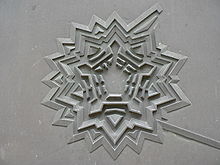
Engineering has existed since ancient times, whenhumansdevised inventions such as the wedge, lever, wheel and pulley, etc.
The termengineeringis derived from the wordengineer,which itself dates back to the 14th century when anengine'er(literally, one who builds or operates asiege engine) referred to "a constructor of military engines".[7]In this context, now obsolete, an "engine" referred to a military machine,i.e.,a mechanical contraption used in war (for example, acatapult). Notable examples of the obsolete usage which have survived to the present day are military engineering corps,e.g.,theU.S. Army Corps of Engineers.
The word "engine" itself is of even older origin, ultimately deriving from the Latiningenium(c. 1250), meaning "innate quality, especially mental power, hence a clever invention."[8]
Later, as the design of civilian structures, such as bridges and buildings, matured as a technical discipline, the termcivil engineering[6]entered the lexicon as a way to distinguish between those specializing in the construction of such non-military projects and those involved in the discipline ofmilitary engineering.
Ancient era

Thepyramidsinancient Egypt,zigguratsofMesopotamia,theAcropolisandParthenonin Greece, theRoman aqueducts,Via Appiaand Colosseum,Teotihuacán,and theBrihadeeswarar TempleofThanjavur,among many others, stand as a testament to the ingenuity and skill of ancient civil and military engineers. Other monuments, no longer standing, such as theHanging Gardens of Babylonand thePharos of Alexandria,were important engineering achievements of their time and were considered among theSeven Wonders of the Ancient World.
The six classicsimple machineswere known in theancient Near East.Thewedgeand theinclined plane(ramp) were known sinceprehistorictimes.[9]Thewheel,along with thewheel and axlemechanism, was invented inMesopotamia(modern Iraq) during the 5th millennium BC.[10]Thelevermechanism first appeared around 5,000 years ago in theNear East,where it was used in a simplebalance scale,[11]and to move large objects inancient Egyptian technology.[12]The lever was also used in theshadoofwater-lifting device, the firstcranemachine, which appeared in Mesopotamiac. 3000 BC,[11]and then inancient Egyptian technologyc. 2000 BC.[13]The earliest evidence ofpulleysdate back to Mesopotamia in the early 2nd millennium BC,[14]andancient Egyptduring theTwelfth Dynasty(1991–1802 BC).[15]Thescrew,the last of the simple machines to be invented,[16]first appeared in Mesopotamia during theNeo-Assyrianperiod (911–609) BC.[14]TheEgyptian pyramidswere built using three of the six simple machines, the inclined plane, the wedge, and the lever, to create structures like theGreat Pyramid of Giza.[17]
The earliest civil engineer known by name isImhotep.[6]As one of the officials of thePharaoh,Djo sắc r,he probably designed and supervised the construction of thePyramid of Djoser(theStep Pyramid) atSaqqarain Egypt around 2630–2611 BC.[18]The earliest practicalwater-poweredmachines, thewater wheelandwatermill,first appeared in thePersian Empire,in what are now Iraq and Iran, by the early 4th century BC.[19]
Kushdeveloped theSakiaduring the 4th century BC, which relied on animal power instead of human energy.[20]Hafirswere developed as a type ofreservoirin Kush to store and contain water as well as boost irrigation.[21]Sapperswere employed to buildcausewaysduring military campaigns.[22]Kushite ancestors builtspeosduring the Bronze Age between 3700 and 3250 BC.[23]Bloomeriesandblast furnaceswere also created during the 7th centuries BC in Kush.[24][25][26][27]
Ancient Greecedeveloped machines in both civilian and military domains. TheAntikythera mechanism,an early known mechanicalanalog computer,[28][29]and the mechanicalinventionsofArchimedes,are examples of Greek mechanical engineering. Some of Archimedes' inventions, as well as the Antikythera mechanism, required sophisticated knowledge ofdifferential gearingorepicyclic gearing,two key principles in machine theory that helped design thegear trainsof the Industrial Revolution, and are widely used in fields such asroboticsandautomotive engineering.[30]
Ancient Chinese, Greek, Roman andHunnicarmies employed military machines and inventions such asartillerywhich was developed by the Greeks around the 4th century BC,[31]thetrireme,theballistaand thecatapult.In the Middle Ages, thetrebuchetwas developed.
Middle Ages
The earliest practicalwind-poweredmachines, thewindmillandwind pump,first appeared in theMuslim worldduring theIslamic Golden Age,in what are now Iran, Afghanistan, and Pakistan, by the 9th century AD.[32][33][34][35]The earliest practicalsteam-poweredmachine was asteam jackdriven by asteam turbine,described in 1551 byTaqi al-Din Muhammad ibn Ma'rufinOttoman Egypt.[36][37]
Thecotton ginwas invented in India by the 6th century AD,[38]and thespinning wheelwas invented in theIslamic worldby the early 11th century,[39]both of which were fundamental to the growth of thecotton industry.The spinning wheel was also a precursor to thespinning jenny,which was a key development during the earlyIndustrial Revolutionin the 18th century.[40]
The earliestprogrammable machineswere developed in the Muslim world. Amusic sequencer,a programmablemusical instrument,was the earliest type of programmable machine. The first music sequencer was an automatedfluteplayer invented by theBanu Musabrothers, described in theirBook of Ingenious Devices,in the 9th century.[41][42]In 1206, Al-Jazari invented programmableautomata/robots.He described fourautomatonmusicians, including drummers operated by a programmabledrum machine,where they could be made to play different rhythms and different drum patterns.[43]

Before the development of modern engineering, mathematics was used by artisans and craftsmen, such asmillwrights,clockmakers,instrument makers and surveyors. Aside from these professions, universities were not believed to have had much practical significance to technology.[44]: 32
A standard reference for the state of mechanical arts during the Renaissance is given in the mining engineering treatiseDe re metallica(1556), which also contains sections on geology, mining, and chemistry.De re metallicawas the standard chemistry reference for the next 180 years.[44]
Modern era
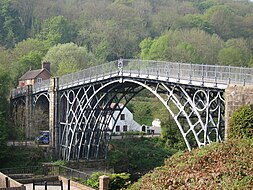
The science ofclassical mechanics,sometimes called Newtonian mechanics, formed the scientific basis of much of modern engineering.[44]With the rise of engineering as aprofessionin the 18th century, the term became more narrowly applied to fields in which mathematics and science were applied to these ends. Similarly, in addition to military and civil engineering, the fields then known as themechanic artsbecame incorporated into engineering.
Canal building was an important engineering work during the early phases of the Industrial Revolution.[45]
John Smeatonwas the first self-proclaimed civil engineer and is often regarded as the "father" of civil engineering. He was an English civil engineer responsible for the design of bridges, canals, harbors, and lighthouses. He was also a capablemechanical engineerand an eminentphysicist.Using a model water wheel, Smeaton conducted experiments for seven years, determining ways to increase efficiency.[46]: 127 Smeaton introduced iron axles and gears to water wheels.[44]: 69 Smeaton also made mechanical improvements to theNewcomen steam engine.Smeaton designed the thirdEddystone Lighthouse(1755–59) where he pioneered the use of 'hydraulic lime' (a form ofmortarwhich will set under water) and developed a technique involving dovetailed blocks of granite in the building of the lighthouse. He is important in the history, rediscovery of, and development of moderncement,because he identified the compositional requirements needed to obtain "hydraulicity" in lime; work which led ultimately to the invention ofPortland cement.
Applied science led to the development of the steam engine. The sequence of events began with the invention of thebarometerand the measurement of atmospheric pressure byEvangelista Torricelliin 1643, demonstration of the force of atmospheric pressure byOtto von Guerickeusing theMagdeburg hemispheresin 1656, laboratory experiments byDenis Papin,who built experimental model steam engines and demonstrated the use of a piston, which he published in 1707.Edward Somerset, 2nd Marquess of Worcesterpublished a book of 100 inventions containing a method for raising waters similar to acoffee percolator.Samuel Morland,a mathematician and inventor who worked on pumps, left notes at the Vauxhall Ordinance Office on a steam pump design thatThomas Saveryread. In 1698 Savery built a steam pump called "The Miner's Friend". It employed both vacuum and pressure.[47]Iron merchantThomas Newcomen,who built the first commercial piston steam engine in 1712, was not known to have any scientific training.[46]: 32

The application of steam-powered cast iron blowing cylinders for providing pressurized air forblast furnaceslead to a large increase in iron production in the late 18th century. The higher furnace temperatures made possible with steam-powered blast allowed for the use of more lime inblast furnaces,which enabled the transition from charcoal tocoke.[48]These innovations lowered the cost of iron, makinghorse railwaysand iron bridges practical. Thepuddling process,patented byHenry Cortin 1784 produced large scale quantities of wrought iron.Hot blast,patented byJames Beaumont Neilsonin 1828, greatly lowered the amount of fuel needed to smelt iron. With the development of the high pressure steam engine, the power to weight ratio of steam engines made practical steamboats and locomotives possible.[49]New steel making processes, such as theBessemer processand the open hearth furnace, ushered in an area of heavy engineering in the late 19th century.
One of the most famous engineers of the mid-19th century wasIsambard Kingdom Brunel,who built railroads, dockyards and steamships.
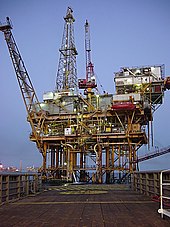
TheIndustrial Revolutioncreated a demand for machinery with metal parts, which led to the development of severalmachine tools.Boring cast iron cylinders with precision was not possible untilJohn Wilkinsoninvented hisboring machine,which is considered the firstmachine tool.[50]Other machine tools included thescrew cutting lathe,milling machine,turret latheand themetal planer.Precision machining techniques were developed in the first half of the 19th century. These included the use of gigs to guide the machining tool over the work and fixtures to hold the work in the proper position. Machine tools and machining techniques capable of producinginterchangeable partslead tolarge scale factory productionby the late 19th century.[51]
The United States Census of 1850 listed the occupation of "engineer" for the first time with a count of 2,000.[52]There were fewer than 50 engineering graduates in the U.S. before 1865. In 1870 there were a dozen U.S. mechanical engineering graduates, with that number increasing to 43 per year in 1875. In 1890, there were 6,000 engineers in civil,mining,mechanical and electrical.[49]
There was no chair of applied mechanism and applied mechanics at Cambridge until 1875, and no chair of engineering at Oxford until 1907. Germany established technical universities earlier.[53]
The foundations ofelectrical engineeringin the 1800s included the experiments ofAlessandro Volta,Michael Faraday,Georg Ohmand others and the invention of theelectric telegraphin 1816 and theelectric motorin 1872. The theoretical work ofJames Maxwell(see:Maxwell's equations) andHeinrich Hertzin the late 19th century gave rise to the field ofelectronics.The later inventions of thevacuum tubeand thetransistorfurther accelerated the development of electronics to such an extent that electrical and electronics engineers currently outnumber their colleagues of any other engineering specialty.[6] Chemical engineeringdeveloped in the late nineteenth century.[6]Industrial scale manufacturing demanded new materials and new processes and by 1880 the need for large scale production of chemicals was such that a new industry was created, dedicated to the development and large scale manufacturing of chemicals in new industrial plants.[6]The role of the chemical engineer was the design of these chemical plants and processes.[6]

Aeronautical engineering deals withaircraft design processdesign whileaerospace engineeringis a more modern term that expands the reach of the discipline by includingspacecraftdesign. Its origins can be traced back to the aviation pioneers around the start of the 20th century although the work ofSir George Cayleyhas recently been dated as being from the last decade of the 18th century. Early knowledge of aeronautical engineering was largely empirical with some concepts and skills imported from other branches of engineering.[54]
The firstPhDin engineering (technically,applied science and engineering) awarded in the United States went toJosiah Willard GibbsatYale Universityin 1863; it was also the second PhD awarded in science in the U.S.[55]
Only adecadeafter the successful flights by theWright brothers,there was extensive development of aeronautical engineering through development of military aircraft that were used inWorld War I.Meanwhile, research to provide fundamental background science continued by combiningtheoretical physicswith experiments.
Main branches of engineering
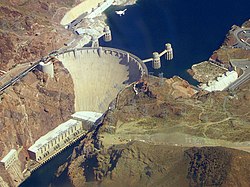
Engineering is a broad discipline that is often broken down into several sub-disciplines. Although an engineer will usually be trained in a specific discipline, he or she may become multi-disciplined through experience. Engineering is often characterized as having four main branches:[56][57][58]chemical engineering, civil engineering, electrical engineering, and mechanical engineering.
Chemical engineering
Chemical engineering is the application of physics, chemistry, biology, and engineering principles in order to carry out chemical processes on a commercial scale, such as the manufacture ofcommodity chemicals,specialty chemicals,petroleum refining,microfabrication,fermentation,andbiomolecule production.
Civil engineering
Civil engineering is the design and construction of public and private works, such asinfrastructure(airports, roads, railways, water supply, and treatment etc.), bridges, tunnels, dams, and buildings.[59][60]Civil engineering is traditionally broken into a number of sub-disciplines, includingstructural engineering,environmental engineering,andsurveying.It is traditionally considered to be separate frommilitary engineering.[61]
Electrical engineering

Electrical engineering is the design, study, and manufacture of various electrical and electronic systems, such asbroadcast engineering,electrical circuits,generators,motors,electromagnetic/electromechanicaldevices,electronic devices,electronic circuits,optical fibers,optoelectronic devices,computersystems,telecommunications,instrumentation,control systems,andelectronics.
Mechanical engineering
Mechanical engineering is the design and manufacture of physical or mechanical systems, such as power andenergysystems,aerospace/aircraftproducts,weapon systems,transportationproducts,engines,compressors,powertrains,kinematic chains,vacuum technology,vibration isolationequipment,manufacturing,robotics, turbines, audio equipments, andmechatronics.
Bioengineering
Bioengineering is the engineering of biological systems for a useful purpose. Examples of bioengineering research include bacteria engineered to produce chemicals, new medical imaging technology, portable and rapid disease diagnostic devices, prosthetics, biopharmaceuticals, and tissue-engineered organs.
Interdisciplinary engineering
Interdisciplinary engineering draws from more than one of the principle branches of the practice. Historically,naval engineeringandmining engineeringwere major branches. Other engineering fields aremanufacturing engineering,acoustical engineering,corrosion engineering,instrumentation and control,aerospace,automotive,computer,electronic,information engineering,petroleum,environmental,systems,audio,software,architectural,agricultural,biosystems,biomedical,[62]geological,textile,industrial,materials,[63]andnuclear engineering.[64]These and other branches of engineering are represented in the 36 licensed member institutions of the UKEngineering Council.
New specialties sometimes combine with the traditional fields and form new branches – for example,Earth systems engineering and managementinvolves a wide range of subject areas includingengineering studies,environmental science,engineering ethicsandphilosophy of engineering.
Other branches of engineering
Aerospace engineering

Aerospace engineering covers the design, development, manufacture and operational behaviour ofaircraft,satellitesandrockets.
Marine engineering
Marine engineering covers the design, development, manufacture and operational behaviour ofwatercraftand stationary structures likeoil platformsandports.
Computer engineering
Computer engineering (CE) is a branch of engineering that integrates several fields of computer science andelectronic engineeringrequired to developcomputer hardwareandsoftware.Computer engineers usually have training in electronic engineering (orelectrical engineering),software design,and hardware-software integration instead of onlysoftware engineeringor electronic engineering.
Geological engineering
Geological engineering is associated with anything constructed on or within the Earth. This discipline appliesgeologicalsciences and engineering principles to direct or support the work of other disciplines such ascivil engineering,environmental engineering,andmining engineering.Geological engineers are involved with impact studies for facilities and operations that affect surface and subsurface environments, such as rock excavations (e.g.tunnels),building foundationconsolidation, slope and fill stabilization,landsliderisk assessment, groundwater monitoring,groundwater remediation,mining excavations, andnatural resourceexploration.
Practice
One who practices engineering is called anengineer,and those licensed to do so may have more formal designations such asProfessional Engineer,Chartered Engineer,Incorporated Engineer,Ingenieur,European Engineer,orDesignated Engineering Representative.
Methodology
This sectionneeds additional citations forverification.(June 2020) |
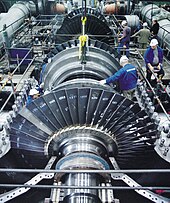
In theengineering designprocess, engineers apply mathematics and sciences such as physics to find novel solutions to problems or to improve existing solutions. Engineers need proficient knowledge of relevant sciences for their design projects. As a result, many engineers continue to learn new material throughout their careers.
If multiple solutions exist, engineers weigh each design choice based on their merit and choose the solution that best matches the requirements. The task of the engineer is to identify, understand, and interpret the constraints on a design in order to yield a successful result. It is generally insufficient to build a technically successful product, rather, it must also meet further requirements.
Constraints may include available resources, physical, imaginative or technical limitations, flexibility for future modifications and additions, and other factors, such as requirements for cost,safety,marketability, productivity, andserviceability.By understanding the constraints, engineers derivespecificationsfor the limits within which a viable object or system may be produced and operated.
Problem solving

Engineers use their knowledge ofscience,mathematics,logic,economics,andappropriate experienceortacit knowledgeto find suitable solutions to a particular problem. Creating an appropriatemathematical modelof a problem often allows them to analyze it (sometimes definitively), and to test potential solutions.[65]
More than one solution to a design problem usually exists so the differentdesign choiceshave to be evaluated on their merits before the one judged most suitable is chosen.Genrich Altshuller,after gathering statistics on a large number ofpatents,suggested thatcompromisesare at the heart of "low-level"engineering designs, while at a higher level the best design is one which eliminates the core contradiction causing the problem.[66]
Engineers typically attempt to predict how well their designs will perform to their specifications prior to full-scale production. They use, among other things:prototypes,scale models,simulations,destructive tests,nondestructive tests,andstress tests.Testing ensures that products will perform as expected but only in so far as the testing has been representative of use in service. For products, such as aircraft, that are used differently by different users failures and unexpected shortcomings (and necessary design changes) can be expected throughout the operational life of the product.[67]
Engineers take on the responsibility of producing designs that will perform as well as expected and, except those employed in specific areas of thearms industry,will not harm people. Engineers typically include afactor of safetyin their designs to reduce the risk of unexpected failure.
The study of failed products is known asforensic engineering.It attempts to identify the cause of failure to allow a redesign of the product and so prevent a re-occurrence. Careful analysis is needed to establish the cause of failure of a product. The consequences of a failure may vary in severity from the minor cost of a machine breakdown to large loss of life in the case of accidents involving aircraft and large stationary structures like buildings and dams.[68]
Computer use
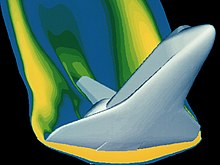
As with all modern scientific and technological endeavors, computers and software play an increasingly important role. As well as the typical businessapplication softwarethere are a number of computer aided applications (computer-aided technologies) specifically for engineering. Computers can be used to generate models of fundamental physical processes, which can be solved usingnumerical methods.

One of the most widely useddesign toolsin the profession iscomputer-aided design(CAD) software. It enables engineers to create 3D models, 2D drawings, and schematics of their designs. CAD together withdigital mockup(DMU) andCAEsoftware such asfinite element method analysisoranalytic element methodallows engineers to create models of designs that can be analyzed without having to make expensive and time-consuming physical prototypes.
These allow products and components to be checked for flaws; assess fit and assembly; study ergonomics; and to analyze static and dynamic characteristics of systems such as stresses, temperatures, electromagnetic emissions, electrical currents and voltages, digital logic levels, fluid flows, and kinematics. Access and distribution of all this information is generally organized with the use ofproduct data managementsoftware.[69]
There are also many tools to support specific engineering tasks such ascomputer-aided manufacturing(CAM) software to generateCNCmachining instructions;manufacturing process managementsoftware for production engineering;EDAforprinted circuit board(PCB) and circuitschematicsfor electronic engineers;MROapplications for maintenance management; and Architecture, engineering and construction (AEC) software for civil engineering.
In recent years the use of computer software to aid the development of goods has collectively come to be known asproduct lifecycle management(PLM).[70]
Social context

The engineering profession engages in a range of activities, from collaboration at the societal level, and smaller individual projects. Almost all engineering projects are obligated to a funding source: a company, a set of investors, or a government. The types of engineering that are less constrained by such a funding source, arepro bono,andopen-designengineering.
Engineering has interconnections with society, culture and human behavior. Most products and constructions used by modern society, are influenced by engineering. Engineering activities have an impact on the environment, society, economies, and public safety.
Engineering projects can be controversial. Examples from different engineering disciplines include: the development ofnuclear weapons,theThree Gorges Dam,the design and use ofsport utility vehiclesand the extraction ofoil.In response, some engineering companies have enacted seriouscorporate and social responsibilitypolicies.
The attainment of many of theMillennium Development Goalsrequires the achievement of sufficient engineering capacity to develop infrastructure and sustainable technological development.[71]

Overseas development and relief NGOs make considerable use of engineers, to apply solutions in disaster and development scenarios. Some charitable organizations use engineering directly for development:
- Engineers Without Borders
- Engineers Against Poverty
- Registered Engineers for Disaster Relief
- Engineers for a Sustainable World
- Engineering for Change
- Engineering Ministries International[72]
Engineering companies in more developed economies face challenges with regard to the number of engineers being trained, compared with those retiring. This problem is prominent in the UK where engineering has a poor image and low status.[73]There are negative economic and political issues that this can cause, as well as ethical issues.[74]It is agreed the engineering profession faces an "image crisis".[75]The UK holds themost engineering companiescompared to other European countries, together with the United States.[citation needed]
Code of ethics
Manyengineering societieshave established codes of practice andcodes of ethicsto guide members and inform the public at large. TheNational Society of Professional Engineerscode of ethics states:
Engineering is an important and learned profession. As members of this profession, engineers are expected to exhibit the highest standards of honesty and integrity. Engineering has a direct and vital impact on the quality of life for all people. Accordingly, the services provided by engineers require honesty, impartiality, fairness, and equity, and must be dedicated to the protection of the public health, safety, and welfare. Engineers must perform under a standard of professional behavior that requires adherence to the highest principles of ethical conduct.[76]
In Canada, engineers wear theIron Ringas a symbol and reminder of the obligations and ethics associated with their profession.[77]
Relationships with other disciplines
Science
Scientists study the world as it is; engineers create the world that has never been.

There exists an overlap between the sciences and engineering practice; in engineering, one applies science. Both areas of endeavor rely on accurate observation of materials and phenomena. Both use mathematics and classification criteria to analyze and communicate observations.[citation needed]
Scientists may also have to complete engineering tasks, such as designing experimental apparatus or building prototypes. Conversely, in the process of developing technology, engineers sometimes find themselves exploring new phenomena, thus becoming, for the moment, scientists or more precisely "engineering scientists".[81]

In the bookWhat Engineers Know and How They Know It,[82]Walter Vincentiasserts that engineering research has a character different from that of scientific research. First, it often deals with areas in which the basicphysicsorchemistryare well understood, but the problems themselves are too complex to solve in an exact manner.
There is a "real and important" difference between engineering and physics as similar to any science field has to do with technology.[83][84]Physics is an exploratory science that seeks knowledge of principles while engineering uses knowledge for practical applications of principles. The former equates an understanding into a mathematical principle while the latter measures variables involved and creates technology.[85][86][87]For technology, physics is an auxiliary and in a way technology is considered as applied physics.[88]Though physics and engineering are interrelated, it does not mean that a physicist is trained to do an engineer's job. A physicist would typically require additional and relevant training.[89]Physicists and engineers engage in different lines of work.[90]But PhD physicists who specialize in sectors ofengineering physicsandapplied physicsare titled as Technology officer, R&D Engineers and System Engineers.[91]
An example of this is the use of numerical approximations to theNavier–Stokes equationsto describe aerodynamic flow over an aircraft, or the use of thefinite element methodto calculate the stresses in complex components. Second, engineering research employs many semi-empirical methodsthat are foreign to pure scientific research, one example being the method of parameter variation.[92]
As stated by Funget al.in the revision to the classic engineering textFoundations of Solid Mechanics:
Engineering is quite different from science. Scientists try to understand nature. Engineers try to make things that do not exist in nature. Engineers stress innovation and invention. To embody an invention the engineer must put his idea in concrete terms, and design something that people can use. That something can be a complex system, device, a gadget, a material, a method, a computing program, an innovative experiment, a new solution to a problem, or an improvement on what already exists. Since a design has to be realistic and functional, it must have its geometry, dimensions, and characteristics data defined. In the past engineers working on new designs found that they did not have all the required information to make design decisions. Most often, they were limited by insufficient scientific knowledge. Thus they studiedmathematics,physics,chemistry,biologyandmechanics.Often they had to add to the sciences relevant to their profession. Thus engineering sciences were born.[93]
Although engineering solutions make use of scientific principles, engineers must also take into account safety, efficiency, economy, reliability, and constructability or ease of fabrication as well as the environment, ethical and legal considerations such as patent infringement or liability in the case of failure of the solution.[94]
Medicine and biology
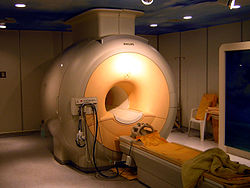
The study of the human body, albeit from different directions and for different purposes, is an important common link between medicine and some engineering disciplines.Medicineaims to sustain, repair, enhance and even replace functions of thehuman body,if necessary, through the use oftechnology.
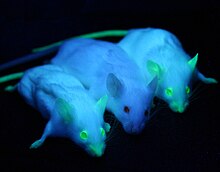
Modern medicine can replace several of the body's functions through the use of artificial organs and can significantly alter the function of the human body through artificial devices such as, for example,brain implantsandpacemakers.[95][96]The fields ofbionicsand medical bionics are dedicated to the study of synthetic implants pertaining to natural systems.
Conversely, some engineering disciplines view the human body as a biological machine worth studying and are dedicated to emulating many of its functions by replacingbiologywith technology. This has led to fields such asartificial intelligence,neural networks,fuzzy logic,androbotics.There are also substantial interdisciplinary interactions between engineering and medicine.[97][98]
Both fields provide solutions to real world problems. This often requires moving forward before phenomena are completely understood in a more rigorous scientific sense and therefore experimentation and empirical knowledge is an integral part of both.
Medicine, in part, studies the function of the human body. The human body, as a biological machine, has many functions that can be modeled using engineering methods.[99]
The heart for example functions much like a pump,[100]the skeleton is like a linked structure with levers,[101]the brain produceselectrical signalsetc.[102]These similarities as well as the increasing importance and application of engineering principles in medicine, led to the development of the field ofbiomedical engineeringthat uses concepts developed in both disciplines.
Newly emerging branches of science, such assystems biology,are adapting analytical tools traditionally used for engineering, such as systems modeling and computational analysis, to the description of biological systems.[99]
Art
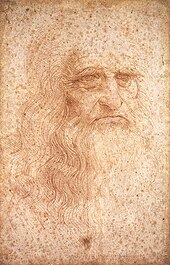
There are connections between engineering and art, for example,architecture,landscape architectureandindustrial design(even to the extent that these disciplines may sometimes be included in a university'sFacultyof Engineering).[104][105][106]
TheArt Institute of Chicago,for instance, held an exhibition about the art ofNASA's aerospace design.[107]Robert Maillart's bridge design is perceived by some to have been deliberately artistic.[108]At theUniversity of South Florida,an engineering professor, through a grant with theNational Science Foundation,has developed a course that connects art and engineering.[104][109]
Among famous historical figures,Leonardo da Vinciis a well-knownRenaissanceartist and engineer, and a prime example of the nexus between art and engineering.[103][110]
Business
Business engineeringdeals with the relationship between professional engineering, IT systems, business administration andchange management.Engineering managementor "Management engineering" is a specialized field ofmanagementconcerned with engineering practice or the engineering industry sector. The demand for management-focused engineers (or from the opposite perspective, managers with an understanding of engineering), has resulted in the development of specialized engineering management degrees that develop the knowledge and skills needed for these roles. During an engineering management course, students will developindustrial engineeringskills, knowledge, and expertise, alongside knowledge of business administration, management techniques, and strategic thinking. Engineers specializing in change management must have in-depth knowledge of the application ofindustrial and organizational psychologyprinciples and methods. Professional engineers often train ascertified management consultantsin the very specialized field ofmanagement consultingapplied to engineering practice or the engineering sector. This work often deals with large scale complexbusiness transformationorbusiness process managementinitiatives in aerospace and defence, automotive, oil and gas, machinery, pharmaceutical, food and beverage, electrical and electronics, power distribution and generation, utilities and transportation systems. This combination of technical engineering practice, management consulting practice, industry sector knowledge, and change management expertise enables professional engineers who are also qualified as management consultants to lead major business transformation initiatives. These initiatives are typically sponsored by C-level executives.
Other fields
Inpolitical science,the termengineeringhas been borrowed for the study of the subjects ofsocial engineeringandpolitical engineering,which deal with formingpoliticalandsocial structuresusing engineering methodology coupled withpolitical scienceprinciples.Marketing engineeringandfinancial engineeringhave similarly borrowed the term.
See also
- Lists
- List of aerospace engineering topics
- List of basic chemical engineering topics
- List of electrical engineering topics
- List of engineering societies
- List of engineering topics
- List of engineers
- List of genetic engineering topics
- List of mechanical engineering topics
- List of nanoengineering topics
- List of software engineering topics
- Glossaries
- Related subjects
- Controversies over the term Engineer
- Design
- Earthquake engineering
- Engineer
- Engineering economics
- Engineering education
- Engineering education research
- Environmental engineering science
- Global Engineering Education
- Green engineering
- Reverse engineering
- Structural failure
- Sustainable engineering
- Women in engineering
References
- ^Hammack, William; Anderson, John (February 16, 2022)."Working in the Penumbra of Understanding".Issues in Science and Technology.National Academies of Sciences, Engineering, and MedicineandArizona State University.Archivedfrom the original on August 3, 2023.RetrievedAugust 3,2023.
The method used by engineers to create artifacts and systems—from cellular telephony, computers and smartphones, and GPS to remote controls, airplanes, and biomimetic materials and devices—isn't the same method scientists use in their work. The scientific method has a prescribed process: state a question, observe, state a hypothesis, test, analyze, and interpret. It doesn't know what will be discovered, what truth will be revealed. In contrast, the engineering method aims for a specific goal and cannot be reduced to a set of fixed steps that must be followed.
- ^definition of "engineering" from the https://dictionary.cambridge.org/dictionary/english/ArchivedFebruary 16, 2021, at theWayback Machine Cambridge Academic Content Dictionary © Cambridge University
- ^"About IAENG".iaeng.org.International Association of Engineers.Archivedfrom the original on January 26, 2021.RetrievedDecember 17,2016.
- ^"About ABET - History".Archivedfrom the original on March 26, 2024.RetrievedApril 27,2024.
- ^"Engineers' Council for Professional Development. (1947). Canons of ethics for engineers".Archivedfrom the original on September 29, 2007.RetrievedAugust 10,2021.
- ^abcdefgSmith, Ralph J. (March 29, 2024)."engineering".Encyclopedia Britannica.Archived fromthe originalon April 25, 2024.
- ^"engineer".Oxford English Dictionary(Online ed.).Oxford University Press.(Subscription orparticipating institution membershiprequired.)
- ^Origin: 1250–1300; ME engin < AF, OF < L ingenium nature, innate quality, esp. mental power, hence a clever invention, equiv. to in- + -genium, equiv. to gen- begetting; Source: Random House Unabridged Dictionary, Random House, Inc. 2006.
- ^Moorey, Peter Roger Stuart (1999).Ancient Mesopotamian Materials and Industries: The Archaeological Evidence.Eisenbrauns.ISBN978-1-57506-042-2.
- ^D.T. Potts (2012).A Companion to the Archaeology of the Ancient Near East.p. 285.
- ^abPaipetis, S. A.; Ceccarelli, Marco (2010).The Genius of Archimedes – 23 Centuries of Influence on Mathematics, Science and Engineering: Proceedings of an International Conference held at Syracuse, Italy, June 8–10, 2010.Springer Science & Business Media.p. 416.ISBN978-90-481-9091-1.
- ^Clarke, Somers; Engelbach, Reginald (1990).Ancient Egyptian Construction and Architecture.Courier Corporation.pp. 86–90.ISBN978-0-486-26485-1.
- ^Faiella, Graham (2006).The Technology of Mesopotamia.The Rosen Publishing Group.p. 27.ISBN978-1-4042-0560-4.Archivedfrom the original on January 3, 2020.RetrievedOctober 13,2019.
- ^abMoorey, Peter Roger Stuart (1999).Ancient Mesopotamian Materials and Industries: The Archaeological Evidence.Eisenbrauns.p. 4.ISBN978-1-57506-042-2.
- ^Arnold, Dieter (1991).Building in Egypt: Pharaonic Stone Masonry.Oxford University Press. p. 71.ISBN978-0-19-511374-7.
- ^Woods, Michael; Mary B. Woods (2000).Ancient Machines: From Wedges to Waterwheels.USA: Twenty-First Century Books. p. 58.ISBN0-8225-2994-7.Archivedfrom the original on January 4, 2020.RetrievedOctober 13,2019.
- ^Wood, Michael (2000).Ancient Machines: From Grunts to Graffiti.Minneapolis, MN: Runestone Press. pp.35, 36.ISBN0-8225-2996-3.
- ^Kemp, Barry J.(2007).Ancient Egypt: Anatomy of a Civilisation.Routledge.p. 159.ISBN978-1-134-56388-3.Archivedfrom the original on August 1, 2020.RetrievedAugust 20,2019.
- ^Selin, Helaine (2013).Encyclopaedia of the History of Science, Technology, and Medicine in Non-Westen Cultures.Springer Science & Business Media.p. 282.ISBN978-94-017-1416-7.
- ^G. Mokhtar (1981).Ancient civilizations of Africa.Unesco. International Scientific Committee for the Drafting of a General History of Africa. p. 309.ISBN978-0-435-94805-4.Archivedfrom the original on May 2, 2022.RetrievedJune 19,2012– via Books.google.
- ^Fritz Hintze, Kush XI; pp. 222–224.
- ^"Siege warfare in ancient Egypt".Tour Egypt.RetrievedMay 23,2020.
- ^Bianchi, Robert Steven (2004).Daily Life of the Nubians.Greenwood Publishing Group. p. 227.ISBN978-0-313-32501-4.
- ^Humphris, Jane; Charlton, Michael F.; Keen, Jake; Sauder, Lee; Alshishani, Fareed (2018)."Iron Smelting in Sudan: Experimental Archaeology at The Royal City of Meroe".Journal of Field Archaeology.43(5): 399.doi:10.1080/00934690.2018.1479085.ISSN0093-4690.
- ^Collins, Robert O.; Burns, James M. (2007).A History of Sub-Saharan Africa.Cambridge University Press.ISBN978-0-521-86746-7.Archivedfrom the original on July 9, 2021.RetrievedSeptember 23,2020– via Google Books.
- ^Edwards, David N. (2004).The Nubian Past: An Archaeology of the Sudan.Taylor & Francis.ISBN978-0-203-48276-6.Archivedfrom the original on July 9, 2021.RetrievedSeptember 23,2020– via Google Books.
- ^Humphris J, Charlton MF, Keen J, Sauder L, Alshishani F (June 2018)."Iron Smelting in Sudan: Experimental Archaeology at The Royal City of Meroe".Journal of Field Archaeology.43(5): 399–416.doi:10.1080/00934690.2018.1479085.
- ^"The Antikythera Mechanism Research ProjectArchived2008-04-28 at theWayback Machine",The Antikythera Mechanism Research Project. Retrieved July 1, 2007 Quote:" The Antikythera Mechanism is now understood to be dedicated to astronomical phenomena and operates as a complex mechanical "computer" which tracks the cycles of the Solar System. "
- ^Wilford, John (July 31, 2008)."Discovering How Greeks Computed in 100 B.C."The New York Times.Archivedfrom the original on December 4, 2013.RetrievedFebruary 21,2017.
- ^Wright, M T. (2005). "Epicyclic Gearing and the Antikythera Mechanism, part 2".Antiquarian Horology.29(1 (September 2005)): 54–60.
- ^Britannica on Greek civilization in the 5th century – Military technologyArchivedJune 6, 2009, at theWayback MachineQuote: "The 7th century, by contrast, had witnessed rapid innovations, such as the introduction of the hoplite and the trireme, which still were the basic instruments of war in the 5th." and "But it was the development of artillery that opened an epoch, and this invention did not predate the 4th century. It was first heard of in the context of Sicilian warfare against Carthage in the time of Dionysius I of Syracuse."
- ^Ahmad Y Hassan,Donald Routledge Hill(1986).Islamic Technology: An illustrated history,p. 54.Cambridge University Press.ISBN0-521-42239-6.
- ^Lucas, Adam (2006).Wind, Water, Work: Ancient and Medieval Milling Technology.Brill Publishers. p. 65.ISBN90-04-14649-0.
- ^Eldridge, Frank (1980).Wind Machines(2nd ed.). New York: Litton Educational Publishing, Inc. p.15.ISBN0-442-26134-9.
- ^Shepherd, William (2011).Electricity Generation Using Wind Power(1 ed.). Singapore: World Scientific Publishing Co. Pte. Ltd. p. 4.ISBN978-981-4304-13-9.
- ^Taqi al-Din and the First Steam Turbine, 1551 A.D.ArchivedFebruary 18, 2008, at theWayback Machine,web page, accessed on line October 23, 2009; this web page refers toAhmad Y Hassan(1976),Taqi al-Din and Arabic Mechanical Engineering,pp. 34–5, Institute for the History of Arabic Science,University of Aleppo.
- ^Ahmad Y. Hassan(1976),Taqi al-Din and Arabic Mechanical Engineering,pp. 34–35, Institute for the History of Arabic Science,University of Aleppo
- ^Lakwete, Angela (2003).Inventing the Cotton Gin: Machine and Myth in Antebellum America.Baltimore: The Johns Hopkins University Press. pp. 1–6.ISBN978-0-8018-7394-2.Archivedfrom the original on April 20, 2021.RetrievedOctober 13,2019.
- ^Pacey, Arnold (1991) [1990].Technology in World Civilization: A Thousand-Year History(First MIT Press paperback ed.). Cambridge MA: The MIT Press. pp. 23–24.
- ^Žmolek, Michael Andrew (2013).Rethinking the Industrial Revolution: Five Centuries of Transition from Agrarian to Industrial Capitalism in England.Brill. p. 328.ISBN978-90-04-25179-3.Archivedfrom the original on December 29, 2019.RetrievedOctober 13,2019.
The spinning jenny was basically an adaptation of its precursor the spinning wheel
- ^Koetsier, Teun (2001). "On the prehistory of programmable machines: musical automata, looms, calculators".Mechanism and Machine Theory.36(5). Elsevier: 589–603.doi:10.1016/S0094-114X(01)00005-2.
- ^Kapur, Ajay; Carnegie, Dale; Murphy, Jim; Long, Jason (2017)."Loudspeakers Optional: A history of non-loudspeaker-based electroacoustic music".Organised Sound.22(2).Cambridge University Press:195–205.doi:10.1017/S1355771817000103.ISSN1355-7718.S2CID143427257.
- ^Professor Noel Sharkey,A 13th Century Programmable Robot (Archive),University of Sheffield.
- ^abcdMusson, A.E.; Robinson, Eric H. (1969).Science and Technology in the Industrial Revolution.University of Toronto Press.ISBN978-0802016379.
- ^Taylor, George Rogers (1969).The Transportation Revolution, 1815–1860.M.E. Sharpe.ISBN978-0-87332-101-3.
- ^abRosen, William (2012).The Most Powerful Idea in the World: A Story of Steam, Industry and Invention.University of Chicago Press.ISBN978-0-226-72634-2.
- ^Jenkins, Rhys (1936).Links in the History of Engineering and Technology from Tudor Times.Ayer Publishing. p. 66.ISBN978-0-8369-2167-0.
- ^Tylecote, R.F. (1992).A History of Metallurgy, Second Edition.London: Maney Publishing, for the Institute of Materials.ISBN978-0-901462-88-6.
- ^abHunter, Louis C. (1985).A History of Industrial Power in the United States, 1730–1930, Vol. 2: Steam Power.Charlottesville: University Press of Virginia.
- ^Roe, Joseph Wickham (1916).English and American Tool Builders.New Haven, Connecticut: Yale University Press.LCCN16011753.Archivedfrom the original on January 26, 2021.RetrievedNovember 10,2018.
- ^Hounshell, David A.(1984).From the American System to Mass Production, 1800–1932: The Development of Manufacturing Technology in the United States.Baltimore, Maryland:Johns Hopkins University Press.ISBN978-0-8018-2975-8.LCCN83016269.OCLC1104810110.
- ^Cowan, Ruth Schwartz(1997).A Social History of American Technology.New York: Oxford University Press. p. 138.ISBN978-0-19-504605-2.
- ^ Williams, Trevor I. (1982).A Short History of Twentieth Century Technology.US: Oxford University Press. p. 3.ISBN978-0-19-858159-8.
- ^Van Every, Kermit E. (1986). "Aeronautical engineering".Encyclopedia Americana.Vol. 1. Grolier Incorporated. p. 226.
- ^ Wheeler, Lynde Phelps (1951).Josiah Willard Gibbs – the History of a Great Mind.Ox Bow Press.ISBN978-1-881987-11-6.
- ^Journal of the British Nuclear Energy Society: Volume 1 British Nuclear Energy Society – 1962 – Snippet viewArchivedSeptember 21, 2015, at theWayback MachineQuote: In most universities it should be possible to cover the main branches of engineering, i.e. civil, mechanical, electrical and chemical engineering in this way. More specialized fields of engineering application, of whichnuclear poweris...
- ^The Engineering Professionby Sir James Hamilton, UK Engineering Council Quote: "The Civilingenior degree encompasses the main branches of engineering civil, mechanical, electrical, chemical." (From the Internet Archive)
- ^Indu Ramchandani (2000).Student's Britannica India,7vol.Set.Popular Prakashan. p. 146.ISBN978-0-85229-761-2.Archivedfrom the original on December 5, 2013.RetrievedMarch 23,2013.
Branches: There are traditionally four primary engineering disciplines: civil, mechanical, electrical and chemical.
- ^"History and Heritage of Civil Engineering".ASCE.Archived fromthe originalon February 16, 2007.RetrievedAugust 8,2007.
- ^"What is Civil Engineering".Institution of Civil Engineers.Archivedfrom the original on January 30, 2017.RetrievedMay 15,2017.
- ^Watson, J. Garth."Civil Engineering".Encyclopaedia Britannica.Archivedfrom the original on March 31, 2018.RetrievedApril 11,2018.
- ^Bronzino JD, ed., The Biomedical Engineering Handbook, CRC Press, 2006,ISBN0-8493-2121-2
- ^Bensaude-Vincent, Bernadette (March 2001). "The construction of a discipline: Materials science in the United States".Historical Studies in the Physical and Biological Sciences.31(2): 223–48.doi:10.1525/hsps.2001.31.2.223.
- ^"Nuclear Engineering Overview"(PDF).Career Cornerstone Center.Archived fromthe original(PDF)on September 29, 2011.RetrievedAugust 2,2011.
- ^Lucas, Jim (August 22, 2014)."What is engineering?".Live Science.Archivedfrom the original on July 2, 2019.RetrievedSeptember 15,2019.
- ^"Genrich Altshuller's Theory of Inventive Problem Solving".Theories About Engineering.Archivedfrom the original on September 11, 2019.RetrievedSeptember 15,2019.
- ^"Comparing the Engineering Design Process and the Scientific Method".Science Buddies.Archivedfrom the original on December 16, 2019.RetrievedSeptember 15,2019.
- ^"Forensic Engineering | ASCE".asce.org.Archivedfrom the original on April 8, 2020.RetrievedSeptember 15,2019.
- ^Arbe, Katrina (May 7, 2001)."PDM: Not Just for the Big Boys Anymore".ThomasNet. Archived fromthe originalon August 6, 2010.RetrievedDecember 30,2006.
- ^Arbe, Katrina (May 22, 2003)."The Latest Chapter in CAD Software Evaluation".ThomasNet. Archived fromthe originalon August 6, 2010.RetrievedDecember 30,2006.
- ^Jowitt, Paul W. (2006)."Engineering Civilisation from the Shadows"(PDF).Archived fromthe original(PDF)on October 6, 2006.
- ^Home page for EMIArchivedApril 14, 2012, at theWayback Machine
- ^"engineeringuk /About_us".Archived fromthe originalon May 30, 2014.
- ^George Edwards."Why Does It Matter? – why are engineering skills important?".Archived fromthe originalon June 19, 2014.RetrievedJune 19,2014.
- ^George Edwards."The ERA Foundation Report".Archived fromthe originalon October 6, 2014.RetrievedJune 19,2014.
- ^"Code of Ethics".National Society of Professional Engineers.Archivedfrom the original on February 18, 2020.RetrievedJuly 12,2017.
- ^"Origin of the Iron Ring concept".Archivedfrom the original on April 30, 2011.RetrievedAugust 13,2021.
- ^Rosakis, Ares."Chair's Message, Caltech".Archived fromthe originalon November 4, 2011.RetrievedOctober 15,2011.
- ^Ryschkewitsch, M.G. NASA Chief Engineer."Improving the capability to Engineer Complex Systems – Broadening the Conversation on the Art and Science of Systems Engineering"(PDF).p. 8 of 21. Archived fromthe original(PDF)on August 14, 2013.RetrievedOctober 15,2011.
- ^American Society for Engineering Education (1970).Engineering education.Vol. 60. American Society for Engineering Education. p. 467.Archivedfrom the original on April 16, 2021.RetrievedJune 27,2015.
The great engineer Theodore von Karman once said, "Scientists study the world as it is, engineers create the world that never has been." Today, more than ever, the engineer must create a world that never has been...
- ^"What is Engineering Science?".esm.psu.edu.Archivedfrom the original on May 16, 2022.RetrievedSeptember 7,2022.
- ^Vincenti, Walter G. (1993).What Engineers Know and How They Know It: Analytical Studies from Aeronautical History.Johns Hopkins University Press.ISBN978-0-8018-3974-0.
- ^Walter G Whitman; August Paul Peck.Whitman-Peck Physics.American Book Company, 1946,p. 06ArchivedAugust 1, 2020, at theWayback Machine.OCLC3247002
- ^Ateneo de Manila University Press. Philippine Studies, vol. 11, no. 4, 1963.p. 600
- ^"Relationship between physics and electrical engineering".Journal of the A.I.E.E.46(2): 107–108. 1927.doi:10.1109/JAIEE.1927.6534988.S2CID51673339.
- ^Puttaswamaiah.Future Of Economic ScienceArchivedOctober 26, 2018, at theWayback Machine.Oxford and IBH Publishing, 2008, p. 208.
- ^Yoseph Bar-Cohen, Cynthia L. Breazeal.Biologically Inspired Intelligent Robots.SPIE Press, 2003.ISBN978-0-8194-4872-9.p. 190
- ^C. Morón, E. Tremps, A. García, J.A. Somolinos (2011) The Physics and its Relation with the Engineering, INTED2011 Proceedingspp. 5929–34ArchivedDecember 20, 2016, at theWayback Machine.ISBN978-84-614-7423-3
- ^R Gazzinelli, R L Moreira, W N Rodrigues.Physics and Industrial Development: Bridging the GapArchivedAugust 1, 2020, at theWayback Machine.World Scientific, 1997, p. 110.
- ^Steve Fuller. Knowledge Management Foundations. Routledge, 2012.ISBN978-1-136-38982-5.p. 92ArchivedAugust 1, 2020, at theWayback Machine
- ^"Industrial Physicists: Primarily specialising in Engineering"(PDF).American Institute for Physics. October 2016.Archived(PDF)from the original on September 6, 2015.RetrievedDecember 23,2016.
- ^Baofu, Peter (March 26, 2009).The Future of Post-Human Engineering: A Preface to a New Theory of Technology.Cambridge Scholars Publishing. p. 141.ISBN978-1-4438-0813-2.
- ^Classical and Computational Solid Mechanics, YC Fung and P. Tong.World Scientific. 2001.
- ^"Code of Ethics | National Society of Professional Engineers".nspe.org.Archivedfrom the original on February 18, 2020.RetrievedSeptember 10,2019.
- ^"Ethical Assessment of Implantable Brain Chips. Ellen M. McGee and G.Q. Maguire, Jr. from Boston University".Archivedfrom the original on April 7, 2016.RetrievedMarch 30,2007.
- ^Evans-Pughe, C. (May 2003)."IEEE technical paper: Foreign parts (electronic body implants).by Evans-Pughe, C. quote from summary: Feeling threatened by cyborgs?".IEE Review.49(5): 30–33.doi:10.1049/ir:20030503.Archivedfrom the original on March 3, 2020.RetrievedMarch 3,2020.
- ^Institute of Medicine and Engineering: Mission statement The mission of the Institute for Medicine and Engineering (IME) is to stimulate fundamental research at the interface between biomedicine and engineering/physical/computational sciences leading to innovative applications in biomedical research and clinical practice.ArchivedMarch 17, 2007, at theWayback Machine
- ^"IEEE Engineering in Medicine and Biology: Both general and technical articles on current technologies and methods used in biomedical and clinical engineering..."Archivedfrom the original on February 13, 2007.RetrievedMarch 30,2007.
- ^abRoyal Academy of Engineering and Academy of Medical Sciences: Systems Biology: a vision for engineering and medicine in pdf: quote1: Systems Biology is an emerging methodology that has yet to be defined quote2: It applies the concepts of systems engineering to the study of complex biological systems through iteration between computational or mathematical modelling and experimentation.ArchivedApril 10, 2007, at theWayback Machine
- ^"Science Museum of Minnesota: Online Lesson 5a; The heart as a pump".Archivedfrom the original on September 27, 2006.RetrievedSeptember 27,2006.
- ^Minnesota State University emuseum: Bones act as leversArchivedDecember 20, 2008, at theWayback Machine
- ^"UC Berkeley News: UC researchers create model of brain's electrical storm during a seizure".Archivedfrom the original on February 2, 2007.RetrievedMarch 30,2007.
- ^abBjerklie, David. "The Art of Renaissance Engineering."MIT's Technology ReviewJan./Feb.1998: 54–59. Article explores the concept of the "artist-engineer", an individual who used his artistic talent in engineering. Quote from article: Da Vinci reached the pinnacle of "artist-engineer" -dom, Quote2: "It was Leonardo da Vinci who initiated the most ambitious expansion in the role of artist-engineer, progressing from astute observer to inventor to theoretician." (Bjerklie 58)
- ^ab"National Science Foundation:The Art of Engineering: Professor uses the fine arts to broaden students' engineering perspectives".Archivedfrom the original on September 19, 2018.RetrievedApril 6,2018.
- ^MIT World:The Art of Engineering: Inventor James Dyson on the Art of Engineering: quote: A member of the British Design Council, James Dyson has been designing products since graduating from the Royal College of Art in 1970.ArchivedJuly 5, 2006, at theWayback Machine
- ^"University of Texas at Dallas: The Institute for Interactive Arts and Engineering".Archivedfrom the original on April 3, 2007.RetrievedMarch 30,2007.
- ^"Aerospace Design: The Art of Engineering from NASA's Aeronautical Research".Archived fromthe originalon August 15, 2003.RetrievedMarch 31,2007.
- ^Billington, David P. (1989).Princeton U: Robert Maillart's Bridges: The Art of Engineering: quote: no doubt that Maillart was fully conscious of the aesthetic implications...Princeton University Press.ISBN978-0691024219.Archivedfrom the original on April 20, 2007.RetrievedMarch 31,2007.
- ^quote:..the tools of artists and the perspective of engineers..ArchivedSeptember 27, 2007, at theWayback Machine
- ^Drew U: user website: cites Bjerklie paperArchivedApril 19, 2007, at theWayback Machine
Further reading
- Blockley, David (2012).Engineering: a very short introduction.New York: Oxford University Press.ISBN978-0-19-957869-6.
- Dorf, Richard,ed. (2005).The Engineering Handbook(2 ed.). Boca Raton: CRC.ISBN978-0-8493-1586-2.
- Billington, David P. (1996).The Innovators: The Engineering Pioneers Who Made America Modern(New ed.). Wiley.ISBN978-0-471-14026-9.
- Madhavan, Guru (2015).Applied Minds: How Engineers Think.W.W. Norton.
- Petroski, Henry(1992).To Engineer is Human: The Role of Failure in Successful Design.Vintage.ISBN978-0-679-73416-1.
- Lord, Charles R. (2000).Guide to Information Sources in Engineering.Libraries Unlimited.ISBN978-1-56308-699-1.
- Vincenti, Walter G. (1993).What Engineers Know and How They Know It: Analytical Studies from Aeronautical History.The Johns Hopkins University Press.ISBN978-0-8018-4588-8.
External links
 The dictionary definition ofengineeringat Wiktionary
The dictionary definition ofengineeringat Wiktionary Learning materials related toEngineeringat Wikiversity
Learning materials related toEngineeringat Wikiversity Quotations related toEngineeringat Wikiquote
Quotations related toEngineeringat Wikiquote Works related toEngineeringat Wikisource
Works related toEngineeringat Wikisource

